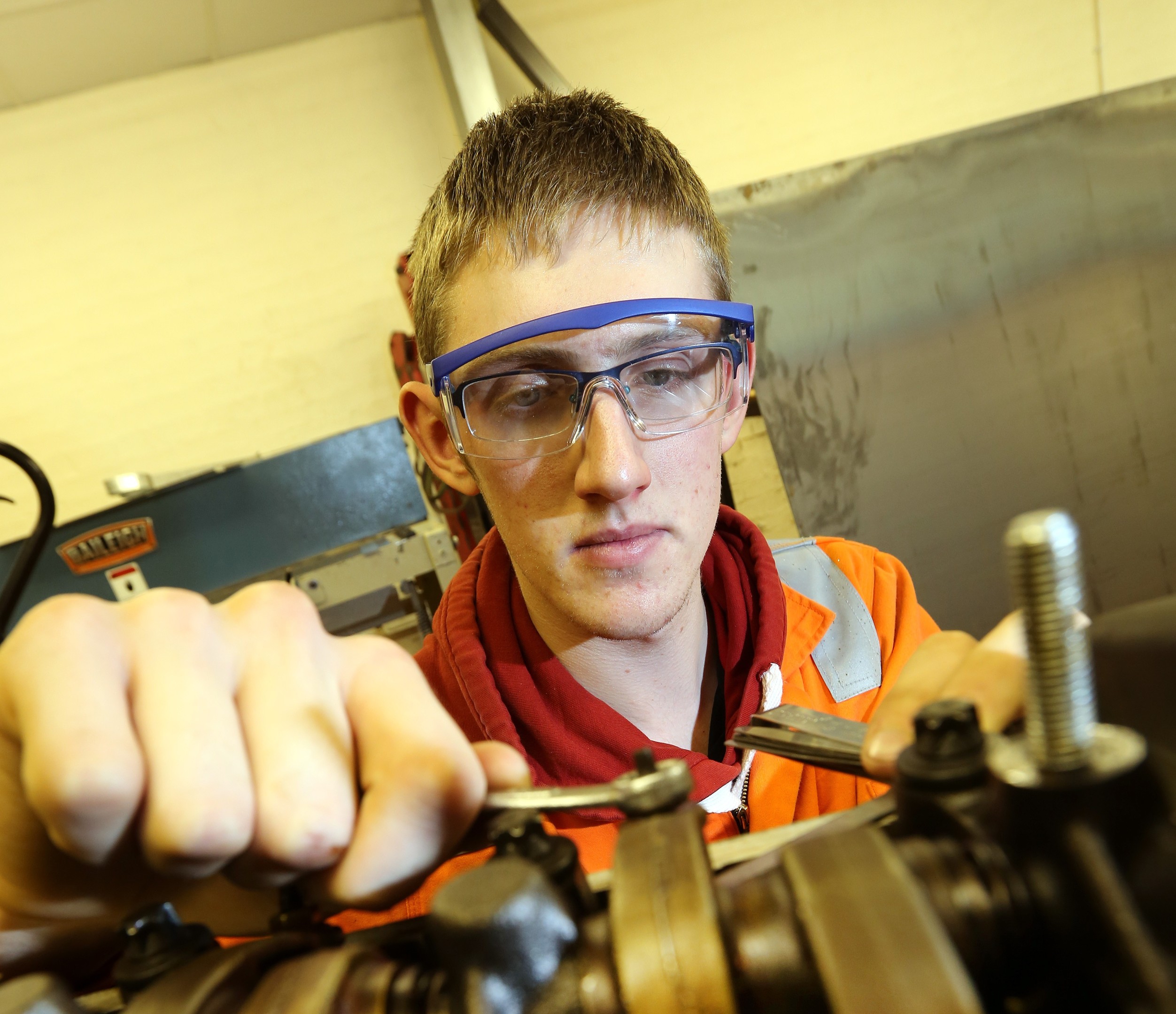Gavin Heddle, 21, from Rosehearty explains what a day in the life of an apprentice simulator technician for Airbus Helicopters looks like
My morning
I wake up at 5am for a 7am start when I’m on the early shift. I usually grab breakfast in work after my hour’s drive in. I work as a simulator technician which means I look after the flight simulator that our helicopter pilots train and practice in.
My morning at work consists of getting the simulator ready for the pilots. This starts with checking the motion system and area to make sure it’s clear of any obstacles and that there is the correct pressures in the holding tanks.
After that I make sure that all of the computers which run the simulator are switched on. These include the visual projection system which displays what the pilots would see out of the real helicopter, and making sure that the host which controls all the systems is up and operational.
Next is to get in the simulator and complete all the pre-fight checks to make sure all the systems are working correctly. The motion system is also engaged to make sure there’s nothing wrong with it.
Then I get to fly the simulator to make sure all the controls are working correctly and that the autopilot is functioning as it should. We sometimes ‘land’ on a rig out at sea or a ship to make sure all the visuals are working correctly before we ‘fly’ back to Aberdeen airport and check that the Instrument Landing System (ILS) is working.
This aids the pilots by taking the aircraft along the correct heading and bringing the aircraft to 60 feet above the runway where I try and land softly but that doesn’t always happen.
The motion is then disengaged and the debriefing room set up. This is where pilots can play back recorded missions and speak about what they did or can improve on. The simulator schedule is then checked to see what free time is available to complete any maintenance. Should there be sufficient time, maintenance can be carried out or quality tests can be run to ensure the simulator is performing as expected.
My lunch
I normally have lunch about 12pm but if the simulator needs fixing then lunch is just once it’s fixed. I usually take in my own lunch which is prepared the night before.
My afternoon
The afternoon then consists of completing any jobs outstanding and planning any tasks that need to be carried out on the simulator.
When I’m on the early shift I finish at 3.30pm and get home at 4.30pm where I usually eat my supper and then get out on my fishing boat if the weather’s fine, otherwise I will go out for a walk or have a game of badminton.
I got the job with Airbus Helicopters after doing a course with The Prince’s Trust. The course really helped me and I actually became a Young Ambassador for The Prince’s Trust last year. This role involves me going and speaking to other organisations and young people at different events. It’s teaching me different skills like public speaking and it’s great to be part of the charity as they helped me so much when I was looking for work.
I find my job very interesting and I’m learning new things every day, including more and more about how to operate the helicopter simulator. Every day is different and can be challenging but that’s why I enjoy it so much.
Gavin took part in the Get into Oil and Gas course with The Prince’s Trust. This course was supported by Enterprise & North East Trust, Tullos Training and the Knight Property Group with support for the course and the Get into programme across Scotland from Wood Family Trust.
The programme helps young people build up skills and experience in specific industries ranging from hospitality and construction to oil and gas and retail. The Prince’s Trust would love to hear from any young person who wants to find out what opportunities they can offer to help them get a job, an education or start their own business. To find out more visit www.princes-trust.org.uk/Scotland
